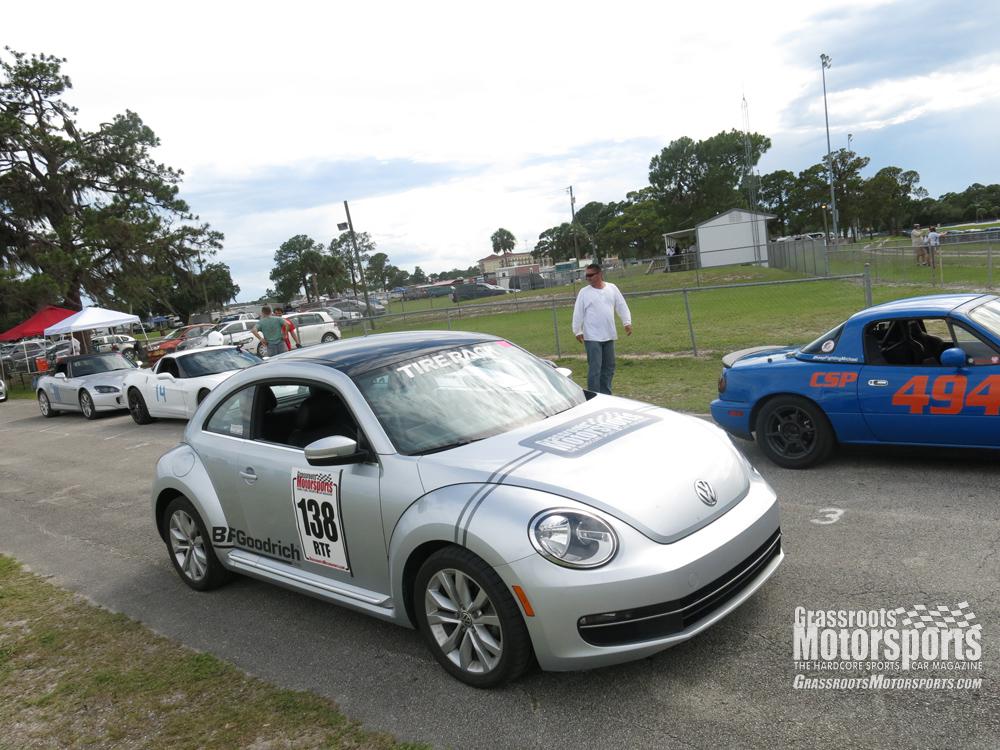We had fun at last year's Tire Rack SCCA Solo National Championships, but our 2013 Volkswagen Beetle TDI was a little out of its element.
We don’t mind autocrossing slower cars, but as most courses are designed to maximize second-gear performance, our diesel kept running out of gear. As a result, we were constantly shifting between second and third. Throw in the diesel's rather flat power curve, and let’s just say that a Golf GTI offers the autocrosser a bit more thrill.
We enjoyed running at Virginia International Raceway, so we figured that another track day was in order--you know, to give the car a chance to redeem itself. So we made tracks for an SCCA PDX track day at the world-famous Sebring International Raceway. We'd be running on the shorter Club Course.
Prep was minimal: Refit our BFGoodrich g-Force Rival tires, take advantage of a $5 carwash, check fluids, and head toward Sebring.
The Volkswagen quickly fell into its element on track. Despite the stock suspension, the Rivals delivered solid, predictable handling during each 20-minute session. The chassis never got greasy, and the handling remained predictable and solid.
We'd call the car “Miata-fast,” as we could easily run with the popular two-seaters--assuming they weren't turbocharged or anything. In fact, several people asked what we did to the Volkswagen. Our mod list was short: the BFG Rival tires, marginally better brake pads, and the conversion from wheel bolts to studs.
The engine ran cool, too. Our water temperatures were a constant 194 degrees. We see that same exact figure during our daily commute. Oil temps were usually right around 220 degrees.
We also didn't use a ton of fuel. We filled up before we got to Sebring, and then stopped again on the way home--mainly because we needed the pit stop, not the gas. During that 209-mile stint, we saw 23.6 mpg.
If anything, we'd like to work on the brakes. Toward the end of the day, the pedal felt a little mushy. Time for some better, fresher fluid. Before our next track outing, we'd like to freshen the brake pads, too.
| Get the best sports car content 8 times a year. Subscribe to Grassroots Motorsports now. |






















